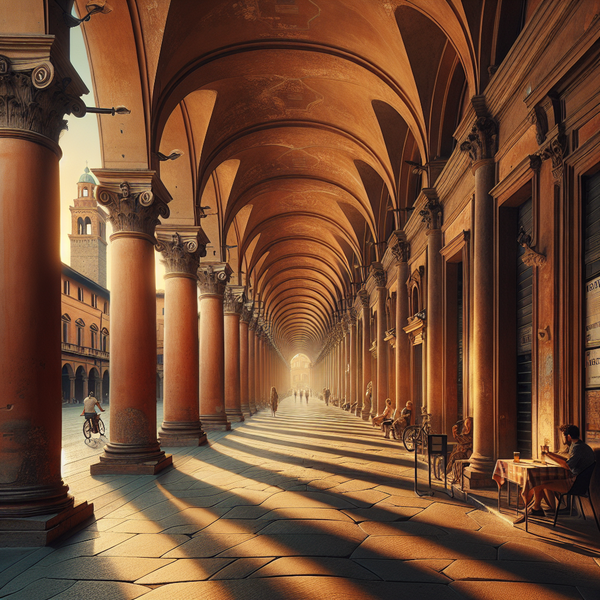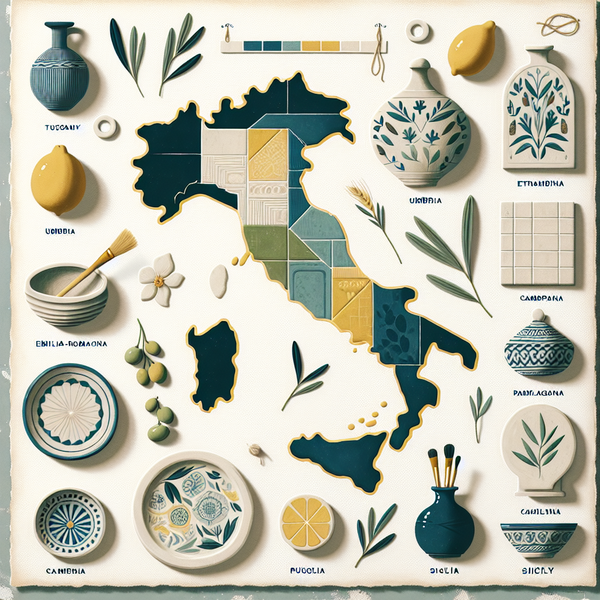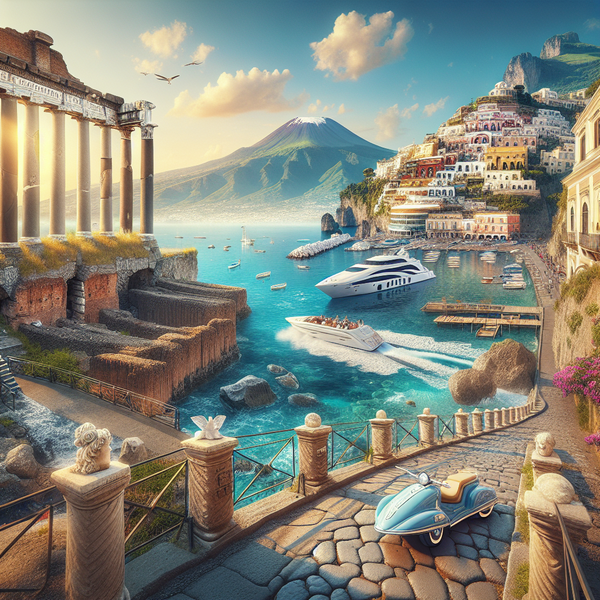It’s easy to fall in love with Bologna, but what truly sets this Italian city apart are its endless porticoes — elegant arcades that wind through the streets like time-honored guardians. Walking under these architectural marvels feels like stepping into living history, where art, culture, and community blend in every brick and arch. Exploring Bologna’s porticoes offers one of the most fascinating ways to understand the essence of this remarkable city.
Go to the section
ToggleExploring Bologna’s Porticoes and Their UNESCO Heritage Significance
Bologna’s porticoes are more than shelter from the sun or rain — they are a symbol of the city’s social and cultural identity. Recognized as a UNESCO World Heritage Site, these covered walkways reflect centuries of architectural evolution and urban wisdom. Their design, both functional and elegant, unites private and public life in ways that continue to shape Bologna’s charm today.
The porticoes stretch for over 60 kilometers across the city, linking churches, palaces, and squares in a continuous network. Each section, with its unique arches and columns, tells a story of craftsmanship and civic pride. As you explore, you’ll notice how different styles coexist, from medieval and Renaissance to Baroque and modern interpretations.
The Origins of Bologna’s Porticoes
Long before they became heritage icons, porticoes emerged from practical needs. When Bologna began expanding, local laws encouraged citizens to build upper floors that extended over the streets, supported by wooden beams. This clever solution created extra living space while offering shaded walkways below. Over time, stone replaced wood, giving rise to the elegant arcades we admire today.
Explore these ancient designs, and you’ll feel how architecture evolved alongside the city’s growing population and intellectual spirit, reflecting Bologna’s historic role as a university center and meeting point for cultures.
Walking Through the Iconic Porticoes of Bologna
Walking under Bologna’s porticoes is like reading an open-air book. Every archway leads you through new aspects of the city’s history and everyday life. From the main squares to quiet side streets, the porticoes invite slow exploration and endless curiosity.
The Portico of San Luca
Perhaps the most famous of all, the Portico di San Luca is an incredible covered walkway that stretches for nearly four kilometers. It connects the city center to the Sanctuary of the Madonna di San Luca, sitting atop a scenic hill. Lined with more than six hundred elegant arches, it offers a spiritual and physical journey that rewards walkers with panoramic views of Bologna.
The Porticoes of Via Zamboni
As Bologna’s university district, Via Zamboni’s porticoes pulse with academic energy. You’ll walk alongside students, professors, and artists discussing ideas in historic cafes. The atmosphere is both intellectual and lively, and the porticoes here retain their medieval charm with narrow arches and ancient facades.
Piazza Maggiore and Surrounding Porticoes
The main square is surrounded by some of the most majestic porticoes in Bologna. Palazzo del Podestà and Palazzo d’Accursio flaunt grand arches that speak of civic power and history. It’s an ideal place to stop, admire the architectural detail, and appreciate the role porticoes have played as venues for gatherings, trade, and celebrations.
The Unique Architecture of Bologna’s Porticoes
Each portico showcases Bologna’s innovative approach to urban design. What makes them special is their consistency: you can walk across the city without leaving cover, from ancient streets to modern boulevards. The porticoes blend seamlessly with every architectural phase, offering travelers a continuous path through time.
Their proportions, materials, and ornamentation differ from one to another. Wooden porticoes evoke the city’s earliest designs, while marble and sandstone versions highlight later artistic refinement. The rhythm of columns and shadows adds a poetic dimension that has inspired countless painters and writers.
Why Exploring Bologna’s Porticoes Feels So Special
Part of the magic of Bologna’s porticoes lies in their constant presence. Whether it rains or shines, locals stroll, chat, and shop beneath these graceful structures. They serve as both community spaces and architectural wonders, linking generations through simple, shared experiences.
There’s a sensory rhythm to walking under them — the change in light, the echo of footsteps, the smell of espresso drifting from nearby cafes. They create a unique atmosphere that embodies Bologna’s soul: welcoming, cultured, and beautifully authentic.
Top Portico Walks to Experience in Bologna
To truly embrace Bologna’s heritage, consider following these memorable routes:
- The San Luca Pilgrimage: Begin at Porta Saragozza and walk uphill through the Portico di San Luca to reach the sanctuary. The journey itself is symbolic of devotion and endurance.
- Via Santo Stefano to the Seven Churches: This walk reveals a quieter, more spiritual side of Bologna. The porticoes here lead to sacred spaces steeped in legend.
- Piazza Maggiore to Via Indipendenza: A perfect mix of history and commerce, this route showcases how porticoes remain integral to daily life, with boutiques and eateries under their arches.
- University Quarter Stroll: Ideal for culture lovers, offering a glimpse of student life and the oldest academic traditions in Europe.
Hidden Porticoes Worth Discovering
Beyond the main attractions, Bologna hides many lesser-known porticoes waiting to be discovered. In narrow alleys and residential areas, you’ll find beautifully preserved sections without crowds.
- Portico dei Servi: Located near Strada Maggiore, this lengthy arcade is serene and atmospheric, with a peaceful cloister-like feel.
- Portico di Palazzo Rossi: A fine example of Renaissance artistry, featuring detailed capitals and decorative fresco traces.
- Portico di Via Farini: A mix of elegance and sophistication, perfect for window shopping or people-watching.
These hidden corners allow you to experience Bologna as locals do — slowly, intimately, and always under the comforting rhythm of arches and light.
How to Experience Bologna’s Porticoes Like a Local
To make the most of your exploration, follow a few local tips. Start early in the morning when the city is still waking up, and the porticoes are quietly bathed in golden light. Stop often for coffee or gelato, and don’t rush — each section deserves your full attention.
Locals love to chat under porticoes, meet friends, and watch life unfold. Joining in these simple rituals will make you feel part of the living fabric of Bologna, not just a visitor passing through.
Preserving Bologna’s Porticoes for the Future
These walkways have survived for centuries thanks to civic care and ongoing restoration. Maintaining them means preserving not only the buildings but the cultural habits they nurture. The UNESCO recognition helps ensure that Bologna’s porticoes will endure as a symbol of harmony between architecture, history, and community.
Efforts continue to protect their integrity while adapting them for modern life. As sustainability becomes central to urban planning, Bologna’s model of shaded, walkable streets offers inspiration for cities worldwide.
Final Thoughts on Exploring Bologna’s Porticoes
Exploring Bologna’s porticoes is more than sightseeing — it’s a deep dive into the city’s living history. Every walkway reflects the creativity and warmth of its people. Whether you’re admiring the grand arcades near Piazza Maggiore or losing yourself in quiet residential lanes, you’ll find that these porticoes embody the true heartbeat of Bologna.
They invite you to slow down, look up, and appreciate how architecture connects past and present in a seamless embrace. For travelers seeking authenticity, charm, and continuity, Bologna’s porticoes promise an unforgettable journey through heritage made tangible.



